Modern women begin to think about how to get rid of gray hair after 35 years. And some are even up to 30 years old. The appearance of gray hairs is not always associated with age factors. There are many other reasons. Not all representatives of the fair sex immediately want to dye their hair with dye, and therefore are looking for more gentle methods. And here many people have a question: “Will henna cover gray hair?” This product has a natural composition, and therefore not only will not harm, but, on the contrary, will improve the health of your hair.
Causes of gray hair
The appearance of gray hair is caused by many factors - environment, stress, hormonal imbalances and other health problems. Don't forget about genetic predisposition. Gray hair most often appears first on the crown and temples. If you notice the first manifestations of the process, then you can combat the problem by simply cutting off individual hairs. But this method does not always work, since over time the strands turn grayer. This means it’s time for radical measures. Of course, the easiest way to color gray hair is with paint. However, as noted above, not all women are ready for such radical measures. Therefore, many people are interested in whether it is possible to cover gray hair with henna. There are many speculations on this matter.
Features of henna and basma
It is not for nothing that representatives of the fair sex are interested in whether it is possible to cover gray hair with henna and basma. After all, every woman is attracted to the natural composition of these products. These coloring powders are obtained by grinding certain plants. For example, henna is based on ground leaves of Lawsonia non-prickly. When dry, it has an unsightly green tint. But the powder makes it possible to color your curls in brown, red and golden tones.
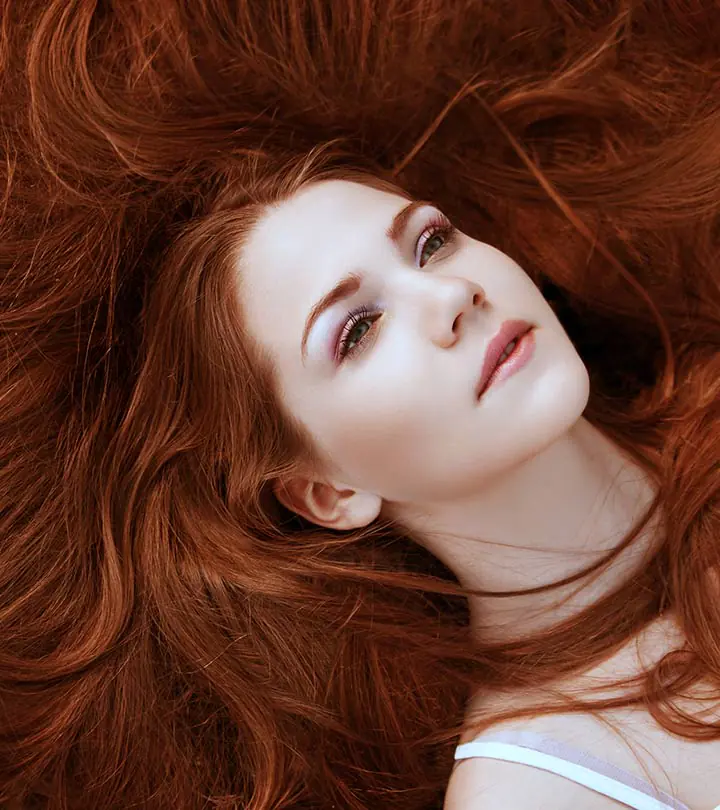
The variety of shades offered depends on the country in which the henna was produced. Bright red color is the hallmark of the Iranian product. In addition, powders are also imported from India and Saudi Arabia.
But basma is a drug that is obtained after processing indigofera, which belongs to the legume family. The powder has a pronounced gray-green color. It is rarely used as a main remedy, since the hair after it often turns blue and green. Most often, basma is used in combination with henna to obtain long-lasting and soft shades. You can achieve a certain color by changing the proportions. Much depends on the initial shade of the curls and the severity of gray hair. Therefore, there is no need to doubt whether henna and basma will cover gray hair. Of course, you will have to work hard, but the result will certainly be positive. To achieve the desired effect, different techniques are used: separate or simultaneous staining.
Benefits of natural dyes
There is no doubt about whether henna and basma will cover gray hair. It’s not for nothing that oriental beauties have been using these powders since ancient times. The health and beauty of their hair can be the envy of any modern woman (taking into account all modern cosmetics).
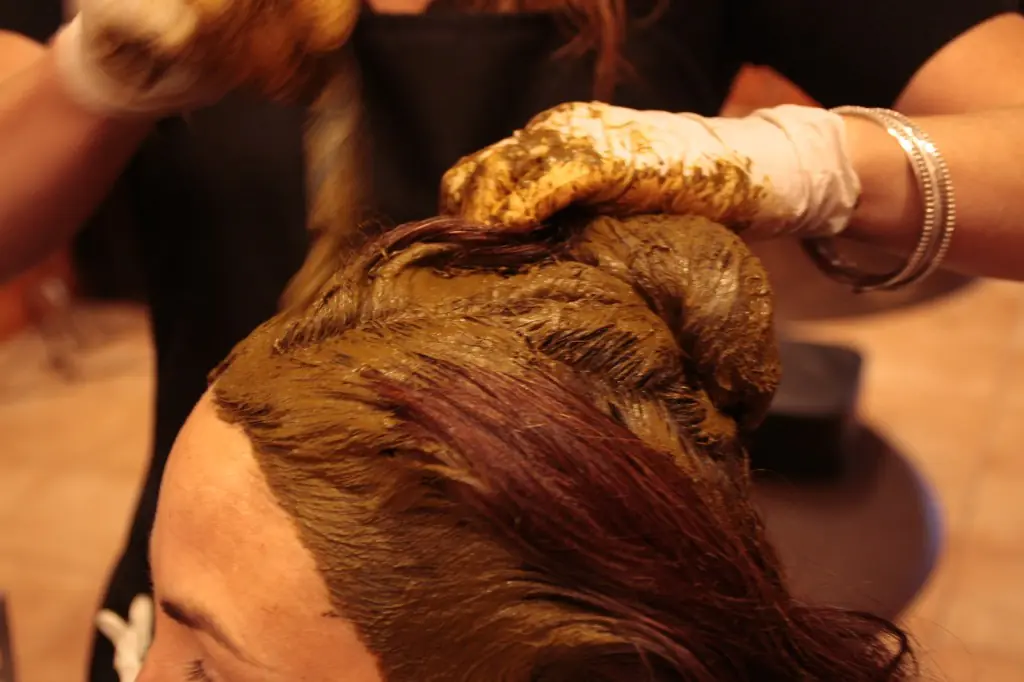
Beauty industry professionals note that natural dyes have many advantages:
- Henna and basma have a beneficial effect on the hair structure.
- Powders stimulate hair growth.
- The drugs nourish and strengthen them.
- Reduce hair loss.
- Normalize the activity of the sebaceous glands.
- Add shine and smoothness.
- Eliminate dandruff.
- They have an affordable price.
- Widely available for sale.
- They are hypoallergenic.
- They make it possible to obtain different shades when dyeing.
- The combined use of henna and basma makes it possible to qualitatively color gray strands. Therefore, there is no doubt about whether the gray hair will be covered. Henna and basma were used long before the advent of chemical dyes.
Disadvantages of natural dyes
Like any dyes, henna and basma have their drawbacks:
- Frequent use can lead to dryness and cause split ends.
- Women whose hair has recently been dyed with chemicals or has undergone a perm procedure should be wary of natural powders.
- Even natural composition sometimes causes allergic reactions.
- Basma and henna are practically powerless over semi-permanent or permanent compositions. Powders are preferable to apply to natural and gray hair.
- After natural dyes, changing the color of your hair with chemical dyes is also difficult.
- Dyed hair fades in the sun.
- Sometimes when painting gray hair it is not possible to get an even, uniform tone.
- Natural dyes have a specific aroma that lasts quite a long time.
- Washing your hair after coloring powders is not the easiest process.
Henna and basma should not be used if your scalp is dry, as well as during lactation and pregnancy, after a perm.
Shades and proportions
When answering the question whether henna covers gray hair or not, I would like to give the correct proportions of dyes. To dye short and medium length hair you will need from 100 to 300 grams of powder. For long strands you will need from 300 to 500 grams. You can use pure henna or add basma, but the total mass will remain unchanged. It is not possible to give a more precise amount of the substance, since much depends on the structure and thickness of the hair, as well as the degree of graying. Professionals say that there is no need to doubt whether henna covers gray hair. For hair that has not suffered too much from graying, the procedure is very effective. It is believed that the success of dyeing is guaranteed if your hair is no more than 40% silver.
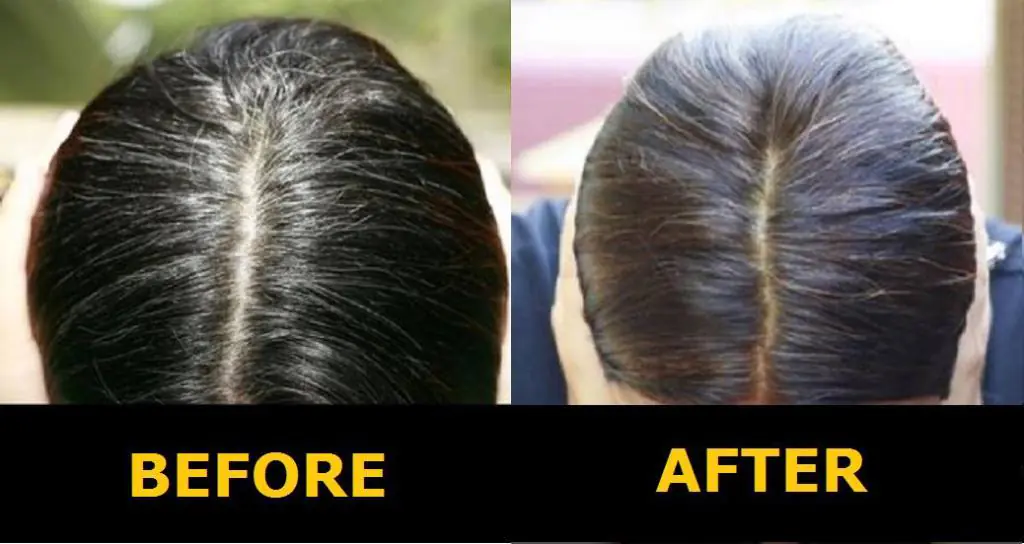
The pigment also “takes” well on completely gray hair. If the amount of graying is in the range of 40-90%, then you will have to try to achieve a uniform shade. But even in this case there is no need to worry. Henna and basma will cover gray hair. User reviews indicate positive dyeing results. Sometimes, to obtain an even tone, you have to do the coloring more than once, since it is difficult to cover gray hair well on the first try. You can get a deep and rich shade only after a series of procedures.
Types of henna
How to cover gray hair on dark hair? Lawsonia powders are the best option for coloring dark hair. All types of henna are suitable: Sudanese and Iranian. Brown Indian powder copes very well with gray hair. To obtain a more expressive shade, the powder can be diluted with natural freshly brewed coffee. Indian henna beautifully highlights brown hair if you add turmeric. This mixture gives your hair a beautiful milk chocolate shade.
Sudanese henna gives dark hair a copper color and light hair a bright red color. The powder also works well for coloring gray hair in the following combinations:
- With colorless henna. Both products must be taken in equal proportions. On gray hair you will get a strawberry blonde, and on chestnut and light brown hair you will get a light red tint.
- With basma. After dyeing, the hair will acquire a chestnut or copper-brown tone. The resulting color largely depends on the initial tone, the amount of graying and the proportions taken.
It is difficult to determine the best henna for gray hair coloring. Each type copes with the task. You can choose the best option for yourself only during use.
Iranian henna for hair
Does Iranian henna color gray hair? Of course, it colors. Moreover, with its help you can achieve different shades. In its pure form, it gives the hair a red color. But in combination with additional ingredients you can get the following shades:
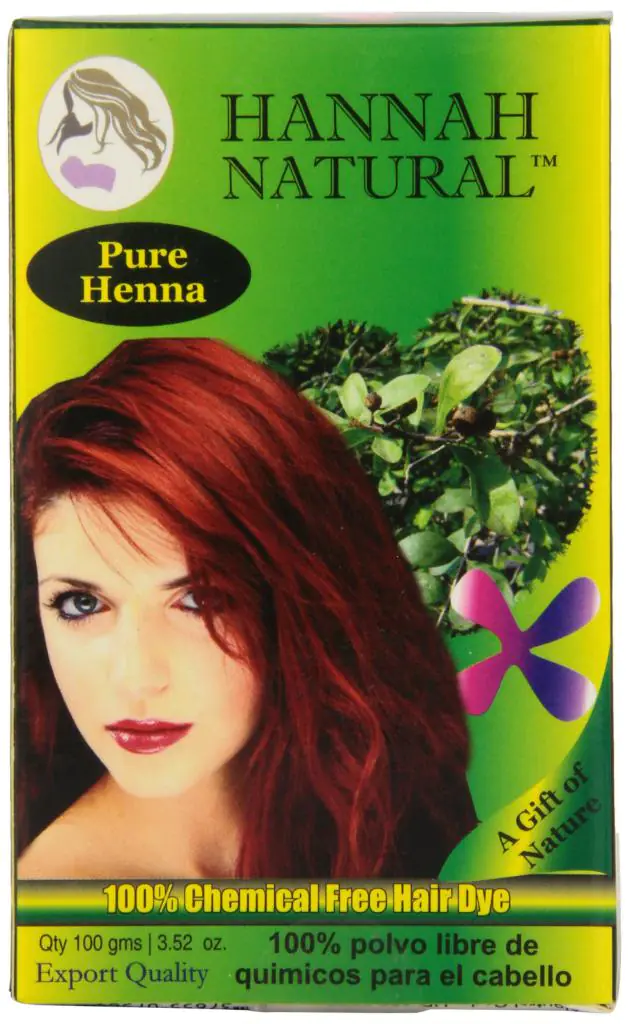
- Wheat. Iranian powder is combined with a decoction of dandelion roots or chamomile flowers.
- Ocher. You will get a deep yellow-red hue if you add onion skin infusion.
- The golden color is the result of combining Iranian powder with chamomile or turmeric.
- A creamy golden hue can be achieved by adding chicory.
- Yellow-orange can be obtained by adding tangerine and orange peels.
- A light red tint is possible by adding ginger, as well as parsley or tea tree essential oil to Iranian henna.
- Auburn when using cinnamon.
- Chestnut, brown and chocolate are the result of a combination of natural coffee, henna, oak bark decoction, nutmeg and walnut shells.
- Plum. To obtain such an intense shade, you should add elderberries to the powder.
- Ruby. Shade can be achieved by adding cranberry or beet juice.
Basma
Basma in its pure form is used to dye fabrics in beautiful colors of emerald and azure. When dyeing hair, the same effect is observed, so experts recommend using mixtures of henna and basma. Does such a mass cover gray hair? Of course, he paints it over. Moreover, the application always gives good results. When purchasing basma, pay attention to its composition. Only pure powder needs to be combined with henna. Now manufacturers produce ready-made mixtures that contain many additional substances. Such preparations usually do not require the addition of henna.
Combine both powders
Does henna cover gray hair? For silver-colored hair, a real lifesaver is a mixture of henna and basma. This tandem is indispensable for effective coloring of gray hair. Different proportions and exposure times allow you to get very beautiful shades.
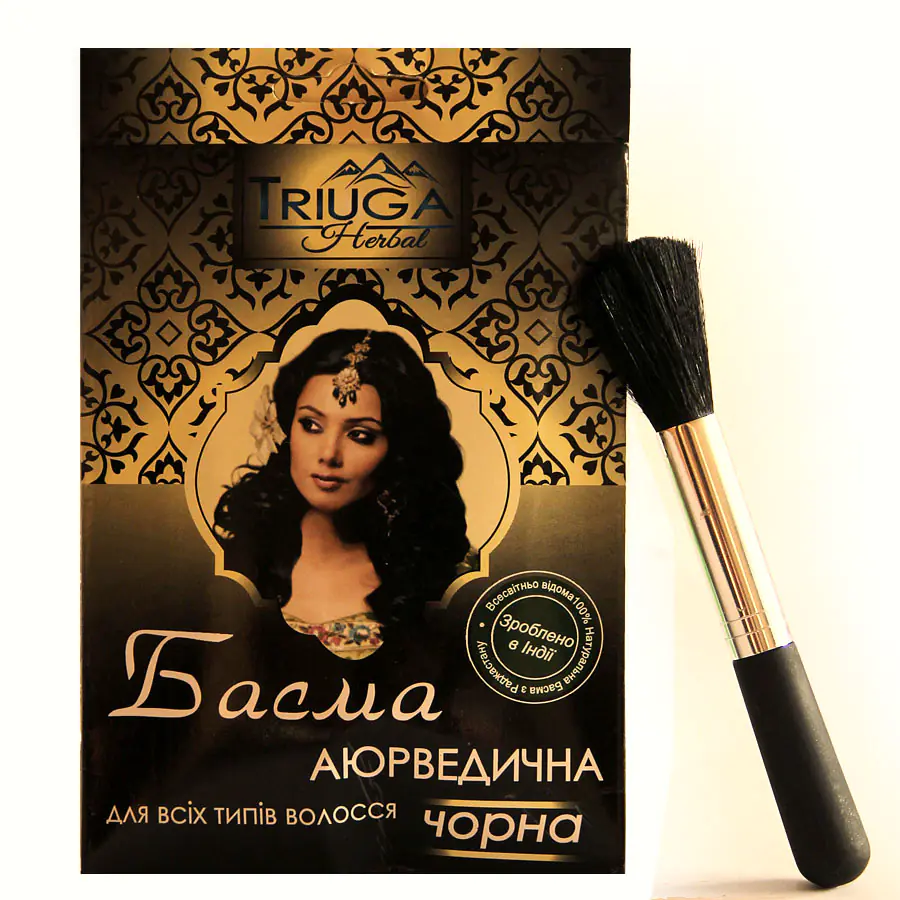
Experts recommend adhering to the following ratios:
- 1:1 – makes it possible to obtain a chestnut shade of different saturation.
- 1:2 – chocolate or brown color. To obtain an intense black shade, the mixture should be kept for at least 1-2 hours. For gray hair, the mixture should be left on the curls even longer.
- 2:1 – bronze color on dark hair or red on blondes.
- 3:1 – light brown. This ratio is used only for light hair.
Does henna and basma cover gray hair? The mixture of products is very effective, but to obtain a lasting result it must be kept on the hair for a very long time, as evidenced by reviews from women. Sometimes the procedure can take 5-6 hours. Not every representative of the fair sex can spend so much time. Therefore, you can plan several colorings in a row.
There are several coloring options. You can first leave henna on your hair and then apply basma. This procedure is called separate painting. In this case, the longer you leave basma on your curls after henna, the darker and richer the color you will get. The first component is left on the hair for about an hour, and the second - from 20 to 120 minutes.
Recommendations from professionals
Women often ask the question: what kind of henna covers gray hair? Experts say that you can use any, the brand and manufacturer do not matter. To successfully color gray hair, you must follow a number of recommendations:
- Henna is diluted not with boiling water, but with hot water, the temperature of which is 70-80 degrees.
- Dry and normal hair can be dyed with lavsonia powder diluted in warm kefir. But for fatty people, water with vinegar or lemon juice is better. This little trick will allow you to get a rich, bright color.
- Basma is diluted in ordinary hot water.
- It is necessary to mix the powders immediately before coloring gray hair. Apply the mixture to your hair while warm.
- Powders cannot be diluted in metal containers. It is better to use ceramics or glass.
- The finished mass should resemble thick sour cream. A mixture that is too thin will run down your face and neck intensely. The dry mass will harden too quickly.
- Powders cannot be diluted for future use and stored in the refrigerator.
- Henna is difficult to wash out of the hair, so you need to add two yolks to the finished mass. This will make the task easier. To prevent dry curls, you can use flaxseed decoction, glycerin and cosmetic oils.
- The cold mass acts on curls longer. To speed up the process, it is recommended to use a warm mixture.
- Natural dyes adhere much better to clean hair.
- If you are dyeing for the first time, it is recommended to start with a few curls to understand what shade you will get and how long you need to keep the mass.
- First you need to color your gray hair.
- After applying henna and basma, the head must be wrapped in polyethylene and then insulated with a towel.
- If you use separate dyeing, you only need to warm your hair when using henna.
Cream henna
In modern stores you can see completely new preparations based on henna and basma. Among them there is henna cream. Will this product cover gray hair? The new drug has proven itself very well. However, it has its pros and cons.
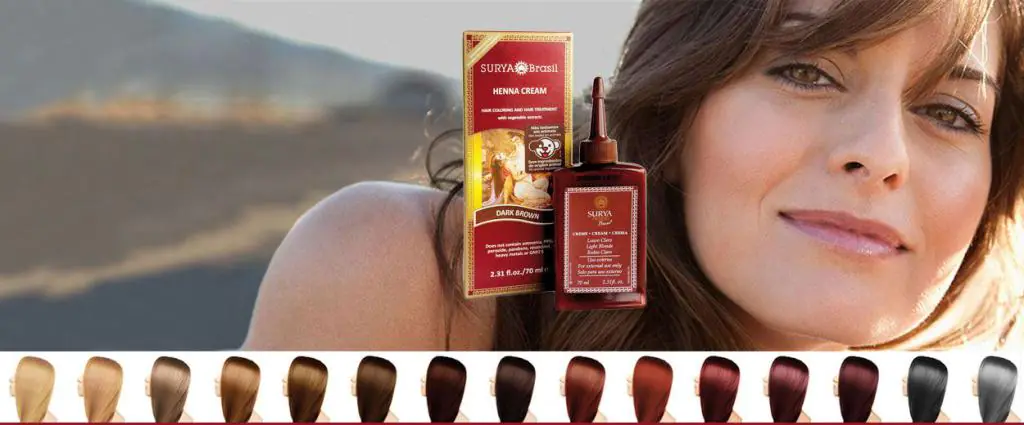
Henna cream copes well with gray hair. The exposure time of such a preparation on the hair is much less than that of powder products. And the product is much easier to apply thanks to its convenient creamy consistency. As a result, you get a beautiful shade of curls. But, according to women, henna cream is washed off from the hair very quickly, and after a week the color is lost. This is a serious disadvantage. Otherwise, the product is very convenient, although when using it, everything around is colored, as is the case with powders.
Coloring techniques
Separate and simultaneous staining allows you to get almost the same result. The first method is most often used for gray hair, as well as to obtain a deep black shade.
The convenience of separate dyeing is that you see what color your curls are getting and can immediately adjust the shade. Natural dyes are difficult to wash out of your curls, especially if they are long. But in no case is it recommended to wash your hair with shampoo or use conditioners for the first 72 hours. You can fix the resulting color by rinsing with rosehip decoction or water and vinegar.
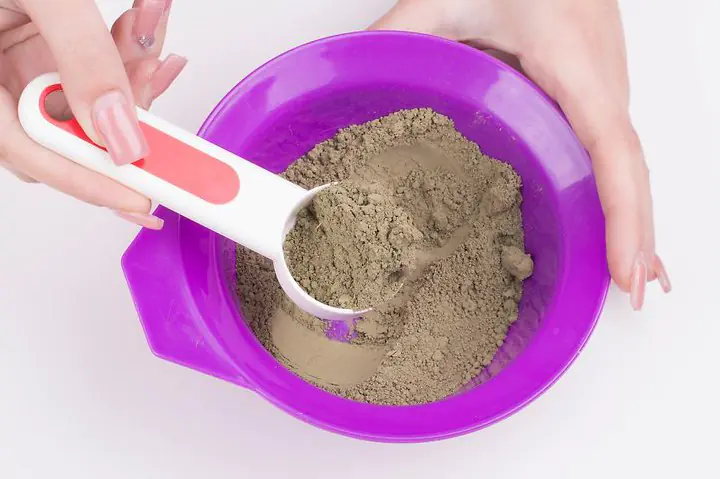
After the first coloring, after some time you will have to update the color. It is recommended to do this no more than once every two to three months. This applies to long hair. You can dye your roots much more often.
Does henna cover gray hair: reviews
Numerous reviews indicate that with the help of henna and basma, you can achieve lasting coloring of gray hair. Of course, using natural dyes is more troublesome than using ready-made store-bought cream dyes. However, the latter are characterized by a very aggressive effect, for this reason women prefer henna and basma. In addition, chemical dyes do not differ in durability on hair. The tint is washed off very quickly, especially from gray hair, which forces women to carry out the harmful procedure again.
Henna is a home remedy that maintains the natural beauty of hair and also restores its original appearance. We are talking about how to dye gray hair with henna. Natural remedies such as henna and black tea, especially for gray hair, will give the hair pigment, strength and the same healthy shine.
Mehendi, also known as henna, will not only color your hair, it will make it thicker, stronger and silkier, the tea will give it a special deep pigment. Dyeing gray hair with henna has its drawback; you will need to dye gray hair with it more often than with dye.
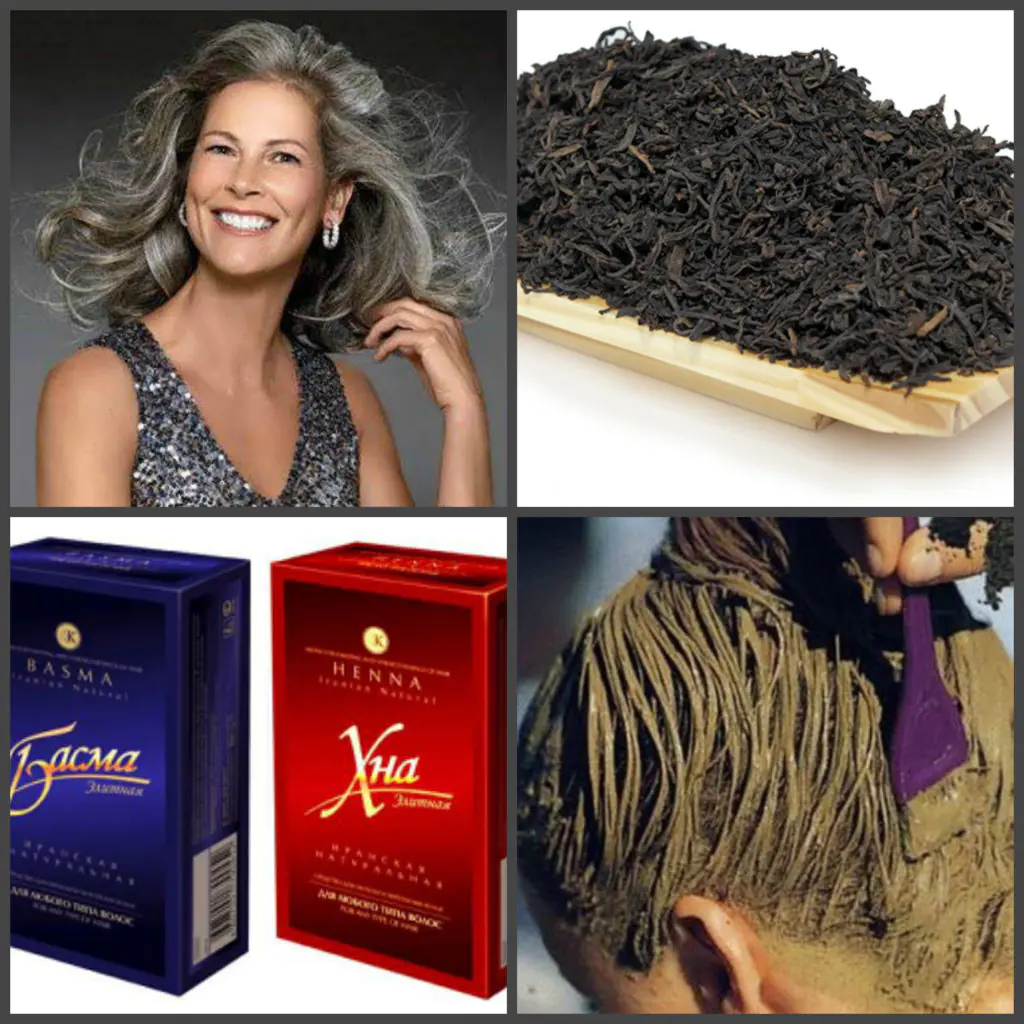
Does henna cover gray hair?
– henna perfectly colors gray hair, especially in the initial stages. To dye completely gray hair, you must also use basma. Do you doubt it?! This is very in vain, because our grandmothers dyed their hair only with the help of nature, without chemical pigmentation.
Coloring gray hair with henna and tea
First, we will determine your type of gray hair in order to calculate the time and type of dyeing gray hair with henna.
Gray Hair Types:
- Initial type of gray hair – initial gray hair is gray hair that fills less than a quarter of the hair.
- Average type of gray hair - the average type of gray hair is almost half of the gray hair.
- The final type of gray hair is that all hair is covered with gray, meaning all hair is devoid of pigment.
In the first two types, gray hair is considered focal, that is, partial. The first two types are easy to dye with henna.
The full type of gray hair is most often diffuse, that is, the hair gradually loses its pigment.
When your hair begins to turn completely gray, you need to use henna with the addition of basma and leave it on your hair longer.
How to dye gray hair with tea and henna:
On average, to get rid of gray hair, you should apply a mixture of henna and tea every two to three weeks. There are many side effects from regular hair dyes. Here at whair articles, we always recommend care products that are gentle on your hair. Women who often use hair dyes know that this often leads to dry, itchy and flaky scalp, while henna nourishes the hair making it soft, silky and beautiful.
Natural henna with the addition of other components will allow you to get different shades from dark chocolate to red or red.
Dark brown color after dyeing with henna and tea before and after photos:
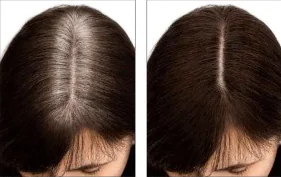
How to dye gray hair with henna?
- The best way to apply henna is to use a dye brush, dividing the strands into sections, just like with regular dyeing, starting at the roots and working towards the lengths and ends.
- After applying henna, wear a cap or wrap your hair under a towel to create heat to open the hair cuticles. In warmth, the dye penetrates deeper and pigments the hair more deeply.
- It is very easy to wash off henna from hair that has already been dyed with it, first wash it off with just water, and then wash your hair with shampoo and conditioner.
The result of dyeing with henna, tea and basma before and after photos:
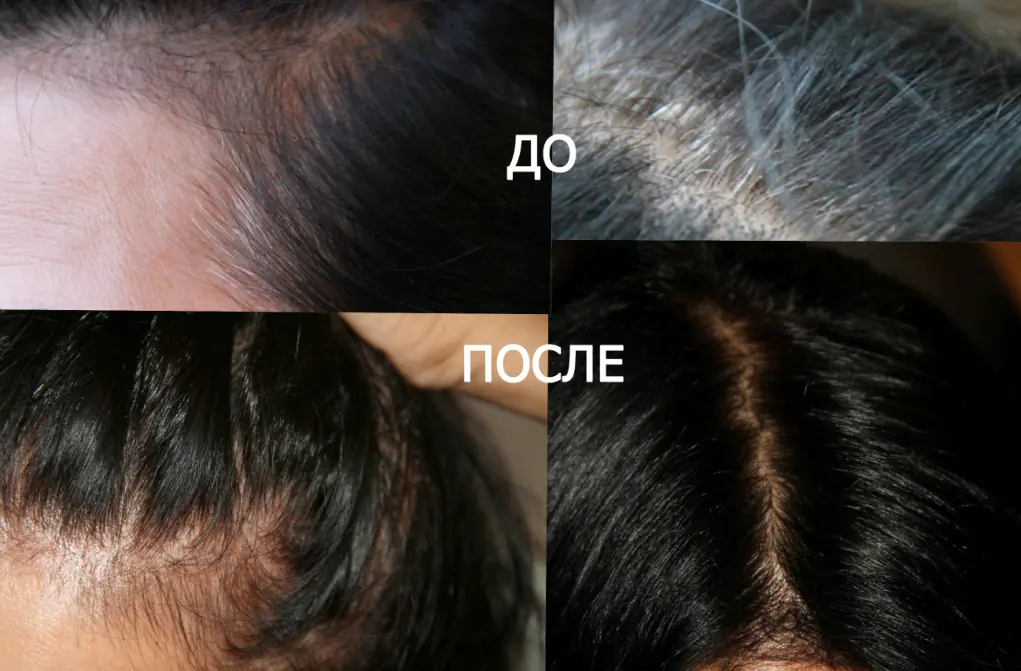
You should only use “natural” henna powder, which is usually light green in color. Stay away from packaged henna, which usually contains synthetic ingredients. If you come across a product where the colors are already pre-mixed, read the label carefully. If it says it is 100% pure henna, it is not. Although there are good products with henna and herbal blends, try to shop around and buy a pack.
Anti-gray hair mask with basma henna and black tea
How to prepare a mask for coloring gray hair with henna:
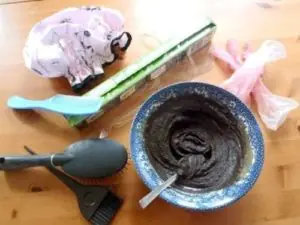
Natural henna, black tea, lemon- Water
- Medium pasta bowl (use an old bowl, it will get dirty)
- Towel
- Shower cap
- Gloves, comb and hairpins
- Conditioner and shampoo
If you have not used henna before, then you need to do a trial test on one strand.
How to get rid of gray hair at home with this folk remedy?
Follow the recipe steps below. This way you can color your gray hair correctly. They are very simple and don't require much effort!
Step 1: Brew black tea
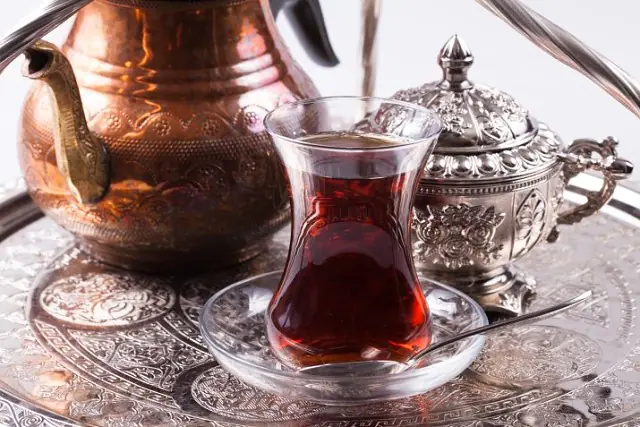
The first and most important thing you need to do is brew loose leaf black tea. Take 2 tablespoons of black tea and pour 0.5 liters of boiling water, leave until the tea cools to room temperature.
Step 2: Prepare an anti-gray mask with henna
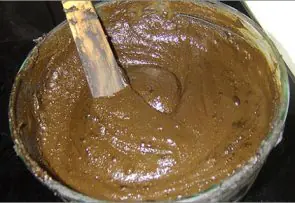
The next thing you should do is prepare a henna mask. Take 2 tablespoons of henna and pour tea over it to obtain the consistency of liquid sour cream. This mask will give gray hair a dark brown or chocolate shade, depending on how soft your hair is. If you are against the redness that paint can give, add lemon juice (4 parts lemon will be enough). Mix well. If you have a lot of gray hair or almost complete gray hair, take 1 tablespoon of henna and 1 tablespoon of basma, but in this case do not add lemon juice.
Step 3: Apply the mask
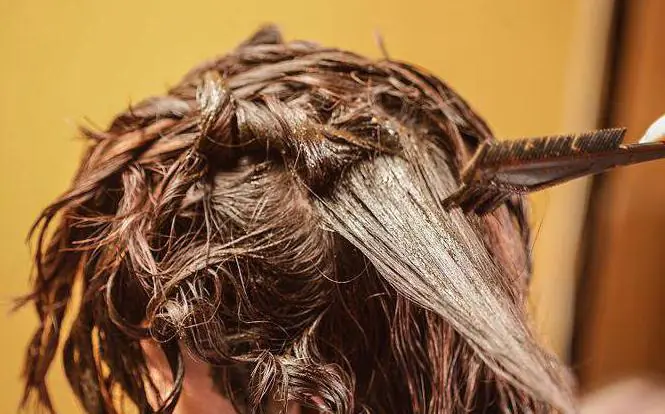
Section your hair to make it easier to apply the gray hair coloring mask. Apply the mask using a brush and secure your hair. Carefully color all your hair. Make sure there are no untreated areas.
Step 4: Remember to wait
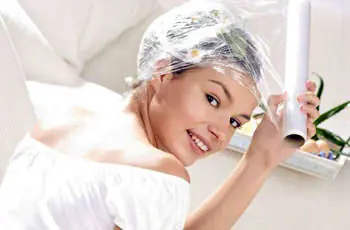
Be sure to create a greenhouse effect with a towel and a cap so that gray hair absorbs the henna pigment as deeply as possible, the result of coloring gray hair depends on this. You will have to wait from 1 to 2 hours, if you have soft, thin hair, then an hour will be enough for the gray hair to be dyed. If your hair is coarse, then you will definitely have to wait an hour and a half, then go through your hair and see the result, wash off the henna or keep it on for longer. Take this time to relax! Give yourself a good pedicure. Read a magazine or, of course, do household chores, but we recommend that you pay attention to relaxation.
Step 5: Wash off the mask
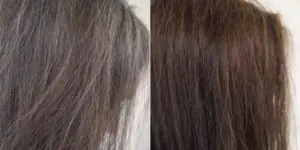
After your time of coloring your gray hair, you can wash your hair. Make sure you wash off any henna residue thoroughly. Rinse the henna off with cool water before washing. It will give a healthy shine to your hair. After washing with shampoo, use conditioner. Use gloves when washing off henna. Massage your head well. Repeat the process if you are not sure.
Now you have finished dyeing gray hair with henna. You will really love your hair.
More recipes for hair coloring with natural home remedies video:
Have you already used henna for gray hair? What are your impressions? Share your experience with us.
Subscribe to site news
Henna and gray hair. Coloring secrets
Stunning hair beauty can be achieved with the help of henna, and at any age, and gray hair is not a hindrance! The main thing is to know what additives and in what proportions to mix with henna. And don't be scared by the bright red color, because the shades can be completely different. And most importantly - no chemicals!
I myself have been using henna since school age. It's not like I wear makeup with it. I just wanted nice thick long hair and strengthened it - I wasn’t lazy. I made these hair masks from henna. I mix henna powder with hot water until it reaches the consistency of sour cream, apply it to my hair, hold it in for as long as my heart desires. I can do it for 15 minutes, but I can forget and walk for hours.
My hair is naturally dark chocolate color. So I had nothing to fear from going too far with the redhead. Hold it for as long as you like. On the contrary, the shade in the sun is simply stunning.
So, since I was not lazy and consistently applied henna once every one or two months throughout the years (until I was 35), my hair was simply beautiful all my life. Thick, long, sparkling in the sun, lively, with an amazing shade. Everyone asked how I managed to keep my hair like that. And when she told me, they were surprised that she didn’t use any expensive products. Henna and that's it.
Yes, only after 35 years did I try dye out of curiosity (gray hair had already appeared and I couldn’t do it without dyeing). I liked it, it was quick, no fuss. And somehow abandon your favorite henna for a couple of years. And what do you think? At first, nothing special seemed to happen. But then my hair began to fall out very much, dandruff began to appear, and only then my head itched, like some kind of allergy, even such red allergic spots began to appear on my forehead. I tried different paints from different companies and at different prices - in vain. The hair dulled, became thinner, stopped shining, and continued to fall out.
I didn’t think about going back to henna. Not because I'm lazy. There's no time for laziness here. It's a shame about the hair. But because by that time several more years had passed, and there was a lot of gray hair. I was afraid that henna would be useless for gray hair. They will become orange-red. Or they won't paint at all.
Of course, I don’t have completely gray hair – but in rows, as it were (when highlighting is done, the strands are lightened, and that’s how my gray hair turned out). But I didn’t want fiery red rows at all. If you mixed it with basma, I didn’t like the color at all after its native chocolate color. And then I found out that henna, it turns out, can be diluted not only with basma, but with various natural remedies and get different shades! Add chamomile infusion and you’ll get a honey-golden color; add walnuts and you’ll get a dark chocolate-chestnut color. Chestnut gold gives the addition of natural ground coffee, the addition of beet juice gives a pomegranate hue, and saffron gives a golden saffron hue. And this is a very small part of getting different colors with henna. Later I will somehow describe all the familiar options on our “secrets” forum.
So, I chose honey-golden-chestnut. I mixed natural ground coffee and henna in equal proportions, diluted it with brewed coffee (5 teaspoons per glass), there you can already dilute it with water to the desired consistency (if necessary). I applied it to my hair and left it on for 5 hours (I was afraid it wouldn’t take gray hair). And what do you think? Firstly, as soon as I washed off the henna, I saw how strong my hair had become, and my scalp had cleared up of some kind of crust, no dandruff, no itching.
And then, after drying, my hair began to shine, like in the old days, otherwise, I must admit, I began to forget this shine. What about the color? Yes great! I did not expect such an effect at all! All the gray hair was perfectly covered, and it wasn’t an orange-red color, but really a golden-chestnut color. And on my chocolate hair (now with a beautiful fiery shade), these once gray strands seemed as if they had been specially created by the hands of an experienced hairdresser-designer. They looked like such golden strands, like cool coloring. Then at work everyone asked how I dyed my hair so beautifully, and who I colored it from. But there’s no paint!
So, another year has passed since then. No dandruff or allergies. My hair no longer falls out. They are still thick, shiny, long and play beautifully in the sun with stunning shades. So now I don’t even think about ruining my hair with dye. Only henna! And she’s not afraid of gray hair!
I am attaching a photo specifically focusing on the places where there is strong gray hair. You can be sure that it colors perfectly. By the way, for those who want to color their gray hair darker or whose hair does not absorb henna well (there are those!), I recommend mixing henna, basma and ground coffee in equal parts. It also turns out beautifully. So use natural remedies and your hair will be shiny and silky, not like in advertising - better!
Natalia
The photo above shows the hair in dim lighting, when no sunlight falls on it. The photo below shows hair under bright sunlight. I am showing you so that you can be convinced that gray hair does not have an orange color even in bright lighting! Let me remind you that I didn’t use basma at all. Only henna and natural ground coffee in equal proportions.
ACCORDING TO YOUR NUMEROUS REQUESTS. Continuation of "Henna and gray hair. Part II" with a step-by-step description of coloring and a photo report, photos before, after and a month after coloring - HERE.
P.S.
The material is given in the “Personal Experience” section, as a person’s experience. Of course, each person's hair structure is different; not everyone can absorb henna well. Plus, it’s worth considering that this case describes a situation where a person’s head is not completely gray, but gray. And accordingly, the gray hair that is painted over becomes copper-golden, in general it looks like highlighting or coloring, it looks very beautiful. Certainly. However, if you have a completely gray head, then henna may not be suitable because the color will be too subtle. It’s even more difficult when a person paints with henna and basma together (purely personal opinion), it’s difficult to choose the proportions and the color turns out worse. Regarding rinsing. Of course, the henna is washed off slowly. If a person constantly uses it, then it is not noticeable in any way on the overall structure of the hair. But at the root, the growing gray hair is very, very visible. Therefore, of course, you will have to paint the roots approximately once every three weeks.
Let’s add that the site is not a representative of any henna, does not place advertisements (except on its own Internet sites), we don’t care what you paint your head with. If you have a different experience, write your material, we can post your personal opinion, see the “Open secret” cheat sheet in the top menu of the site.



